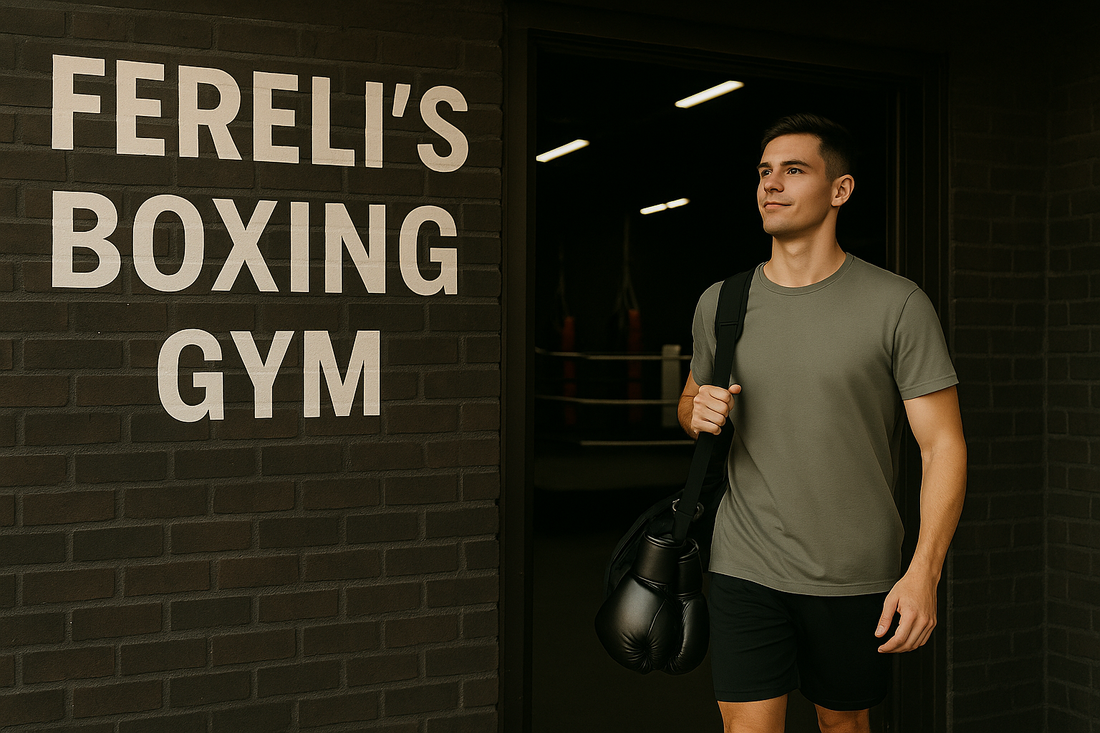
The Ultimate Boxing Beginner’s Guide
Everything You Need to Know to Start Your Boxing Journey the Right Way
Boxing isn’t just a sport. It’s a lifestyle. It’s a test of your mind, your body, and your heart. Whether you’re stepping into the gym for fitness, self-defense, or competition, every fighter starts the same way — as a beginner.
This is your complete boxing guide for beginners, written to help you confidently navigate every phase: from choosing a gym to throwing your first jab, from picking your first gloves to showing up with purpose.
Phase 1: Overcoming the First Hurdle — Just Walking In
Starting boxing is intimidating. You’re stepping into a space full of noise, sweat, and fighters who look like they were born in the ring. The truth? Everyone remembers their first day. And nobody is judging you — because they were once in your shoes too.
Boxing tip for beginners:
The hardest punch to take is self-doubt. The moment you step through the gym door, you’ve already won Round One.
Phase 2: How to Find the Right Boxing Gym
Not all boxing gyms are the same. Some are old-school and gritty, some are modern and fitness-focused. What matters most is finding the right fit for you.
What to Look For:
- Welcoming environment — You should feel respected from day one.
- Proper equipment — Bags, pads, gloves, ring space.
- Structured beginner classes — Ask about classes designed specifically for beginners boxing.
- Active coaching — Coaches should be engaged and attentive, not shouting from the sidelines.
- Diverse community — Good gyms welcome all ages, genders, and levels.
Visit a few gyms before choosing. Most offer a free trial or first session. Don’t commit until you’ve felt the energy of the place.
Phase 3: What Gear Do You Need?
You don’t need to buy everything on Day 1. But you do need the essentials.
Boxing Gear Checklist for Beginners:
- Training Boxing Gloves (14oz or 16oz) – Avoid cheap, generic gloves. Your hands are your tools — protect them. Try our handcrafted training gloves made from top grain leather for a fit that gets better with every round.
- Hand Wraps – Wrap before every session to protect wrists and knuckles.
- Mouthguard – For sparring and partner drills.
- Comfortable activewear – Breathable shorts, t-shirt, and clean trainers.
Optional (but useful):
- Skipping rope, headgear, gym bag, water bottle.
Phase 4: What to Expect on Your First Day
You’re not going to get punched in the face. Boxing gyms take safety seriously, especially with new fighters. Most first sessions are non-contact and focused on technique, movement, and conditioning.
Your first session might include:
- A warm-up (jump rope, shadowboxing)
- Basic footwork and stance drills
- Simple combinations (like jab-cross)
- Bag work or pad drills
- Conditioning (core work, bodyweight exercises)
Boxing tip for beginners:
Focus on learning, not looking tough. Ask questions. Listen closely. And don’t expect to master anything overnight — boxing is a long game.
Phase 5: How to Identify a Good Coach or Team
The best coach isn’t the loudest in the room. It’s the one who takes time to understand you — your body, your goals, your mindset.
Signs of a good boxing coach:
- Watches and corrects your form
- Tailors drills to your level
- Encourages effort over perfection
- Knows when to push and when to pull back
- Makes you feel seen, not just counted
Your team matters too. You’ll grow faster in an environment that celebrates effort, not just outcomes.
Phase 6: Training Focus in the Early Days
Don’t worry about looking slick or fast. In your first 3–6 months, your focus should be on foundation.
Key Skills to Develop Early On:
- Footwork and balance – Everything begins with movement.
- Guard position and defense – Protect your head and body instinctively.
- The jab – It’s the most important punch in boxing.
- Breathing and rhythm – Learn how to pace yourself and stay loose.
- Discipline – Show up consistently, even when motivation dips.
Pro tip: Take short videos of yourself shadowboxing or hitting the bag. Review them to track your progress.
Phase 7: Beginner Workouts You Can Start With
Here are two simple beginner-friendly workouts that you can do on your own.
1) Boxing Circuit (30 mins)
Warm-Up:
- Jump rope – 3 mins
- Dynamic stretches – 2 mins
Technique:
- Shadowboxing – 3 rounds (2 mins each)
- Heavy bag or pad work – 3 rounds (focus on jab-cross combos)
Conditioning:
- Push-ups – 3 sets of 10
- Sit-ups – 3 sets of 15
- Squats – 3 sets of 20
Cool Down:
- Light shadowboxing – 2 mins
- Stretch – 5 mins
2) Footwork & Defence Drill (20 mins)
- Box step forward/backward/sideways – 3 rounds
- Slip line (duck under a rope) – 3 rounds
- Shadowboxing with defense emphasis – 3 rounds
Final Thoughts: Your Journey Starts Now
The biggest mistake beginners make is comparing themselves to others. You’re not here to impress anyone — you’re here to become your best version through boxing.
You’ll sweat. You’ll get frustrated. But you’ll also feel powerful, focused, and alive in a way you’ve never felt before.
That’s what makes boxing different. That’s why it sticks.
Welcome to the ring. You’re not just starting a sport — you’re starting a lifestyle.
Next Steps
Ready to gear up with handcrafted gloves built for real training?
Follow us for more boxing tips and inspiration at @fereliboxing on Instagram.
And if you’re curious about glove sizing and fit, check out our last post:
